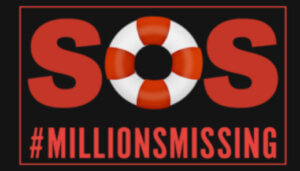Last month, we presented information about the diagnostic criteria, exploring their similarities and differences. Click here to read that article.
This week, we’re reporting on a survey we sent to ME-literate researchers and clinicians. We contacted clinicians who treat or have treated people with myalgic encephalomyelitis (ME) as their main patient population, and researchers who study ME as one of their main areas of focus. We contacted 65 researchers and clinicians, receiving 22 completed survey questionnaires and four sets of stand-alone comments via email. No biopsychosocial (BPS) theorists or clinicians, who view the disease as treatable via changes in behavior, were contacted.
Bottom line response:
The Canadian Consensus Criteria was judged best definition for research and clinical use, for both specialist and mainstream medical practitioners. Though some questions required a definitive answer, while in others, responders were able to choose multiple sets of criteria, the most popular responses were always, in order:
1. Canadian Consensus Criteria (CCC)
2. National Academies of Medicine / Institute of Medicine criteria (NAM/IOM)
3. International Consensus Criteria (ICC)
There were significant gaps between the popularity of these responses. For example, 82% of responders agreed that CCC is appropriate for clinical use, including 100% of clinicians surveyed. 64% considered NAM/IOM appropriate for clinical use, and 41% agreed ICC is appropriate for clinical use.
Our survey also showed that there is low confidence in the adequacy of current criteria overall. When asked whether current definitions are adequate for research and clinical use, the most common response was that none of the definitions are adequate but there is not enough evidence to produce a new set of criteria.
About the Survey
The survey has some limitations. Contacting researchers and clinicians via email, text message, and in person provides us with a convenience sample. Given #MEAction’s outreach, we have contact information for a significant percentage of active researchers and clinicians, but responses will still be determined by who we’ve communicated with before, along with how important they considered the central question(s), and how comfortable they felt sharing the honest opinion we solicited. Researchers often change email addresses as they change institutions, and it is possible that some of the email addresses were no longer in use.
Six individuals who described their professional role as ‘clinical’ completed the survey. Some of these individuals listed researcher as well.
16 individuals listed their role as solely research-oriented. However, of these, 25% also had a medical degree (MD), meaning just under half of responders were trained as clinicians.
Note that inclusion of an answer choice on the survey is not equivalent to agreement with that answer choice. Rather, we included a spectrum of opinions we have heard expressed in conversations with researchers and clinicians in the past.
Finally, note that for ease of understanding, we’ve arranged our data such that popular answers appear first when the chart is read left to right. These were not necessarily the first questions asked. Specifically, when inquiring about diagnostic criteria, we listed them in chronological order.
#MEAction’s goal was to solicit the opinions of researchers and clinicians regarding the diagnostic criteria used both clinically and in research. You can access a pdf of the survey questions here.
I hope that you will join us when we discuss the outcomes of these surveys and how they apply to our advocacy!






12 thoughts on “Diagnostic Criteria: Researchers and Clinicians Survey Results”
I am not seeing the right arrow to click for the document. Please advise.
Lynn
It’s a box with an arrow in it in the right upper corner – if you click on it, it’ll expand the document.
thank youy for doing the survey.
i can’t figure out downloading it so taht i can convert it back to textg, which is more accessible.
also i had to turn js on to access it. i almost never use js for accessibility reasons. i don’t use google docs or any of that for similar reasons.
i am concerned this post will not make it to you. beacuse last one certainly did not despite trying twoce.
A gray square appears where you say there might be a link to a pdf. I am reading this on a phone. I do not know if it appears differently on computer.
The grey square is above a line of icons for sharing to face book, Twitter or by e-mail.
Hi Sarah,
You can read the article here: https://www.meaction.net/wp-content/uploads/2019/11/Researchers-and-clinicians-survey-1.pdf
Thank you for providing this and the previous article that explained the different criteria. It was very helpful to have it all spelled out like that!
Dear MEAction,
Beautiful rigorous work !
And so easy to read and understand.
I’m very impressed.
(I’m a scientist/ and educator – with enough ME to read just 2 sections)
My congratulations to everyone involved.
Anne Highfield
Queensland
Australia
This is a lot to digest and I’ve seen many questions in groups asking about what this means.
I want to point out that there were only 6 clinicians involved in this survey. The International Consensus Primer had 26 clinicians who had more than 500 years of clinical experience. The fact that we had 26 clinicians in this community come to consensus is not something to be ignored. And, yet, the ICC was listed with other criteria as if all criteria carried the same weight.
Another important aspect of this poll is that responders were from the following countries: “Australia; Netherlands; Sweden; the United Kingdom; and the United States”. We have seen these different countries have very different ideas about what “ME” is. As well as, for clinical use, what happens in the UK (and other countries with universal health care) is vastly different from the needs of those of us in the US.
United States patients are stuck working within the parameters of what insurance will cover and need a criteria code (G93.3) that corresponds with the neurological, immunological and cardiac testing required to confirm and/or manage ME. If a patient is diagnosed with CFS or Fibromyalgia, I have heard of (and experienced myself) insurance companies deny testing like the NK cell function testing that is approved by insurance under G93.3.
A bigger concern to me is that only 25% of the researchers checked this box: “It is only important that the research definition is one of the three that require post-exertional malaise (PEM) or
post-exertional neuroimmune exhaustion (PENE).”
If I am reading this correctly – that means that 75% of those responding thought it was okay to do research using criteria that did not require PEM or PENE. I find that beyond disturbing. As we don’t know who the actual researchers are there is no way to interpret why they would have answered the poll in that way.
I am of the opinion that advocacy for ME patients needs to use the ICC and the IC Primer because we have gone far too long visiting doctors who have no grasp of the breadth/depth of ME. To “fit” the ME-ICC or atypical ME-ICC does not mean a person has ME. It means the doctors should take the next steps to rule out other diseases and look deeper to confirm the patients have ME. That’s where the IC Primer is needed.
26 clinicians with over 500 years experience put together a guide for doctors to treat patients. If MEAction decides to (based on this poll) either advocate for ME/CFS-SEID (IOM/NAM report) or not to advocate for any criteria at all, I think that will leave us at status quo with patients continuing to struggle to find doctors who understand ME.
Hi Colleen,
Thank you for your feedback.
There’s a ton to digest from this survey, but the question you have concerns with isn’t about whether researchers and clinicians think PEM or PENE is necessary. (Of course the consensus among researchers and clinicians is that PEM or PENE is integral to this disease.)
This question asked whether all sets of criteria with PEM or PENE as a symptom are fine; it can also be read as “is PEM or PENE your only consideration?”
Researchers and clinicians did not consider the sets of criteria that use PEM/PENE to all be of equal value, which is shown clearly in their other answers. (The answer text reads, “it is ONLY important that the set of criteria be one of the three that include PEM or PENE”. ‘Only’ is the key word here. )
Colleen,
I also want to address your comment about the number of clinicians who took this survey.
To be clear, approximately half of the 22 respondents had a medical degree (were trained as clinicians) – 25% of those who listed their primary role as a research role also had a medical degree (MD). Only 6 respondents listed clinician as their sole background.
A few more points to note comparing our survey to the ICC process:
– 26 people worked on ICC and a very similar number — 22 people — responded to our survey.
– Six of the 26 people who participated in the writing of the ICC were not clinicians in their primary role and in fact do not have MDs.
Put simply, the two groups — those who responded to the survey and those who were on the ICC committee — are actually quite similar in their makeup of degrees held!
What I don’t understand about all these criteria is the absolute insistence on new onset/not lifelong symptoms. I can maybe understand excluding us for research purposes but apparently now even in the clinic we are to be denied a diagnosis of ME despite perfectly filling all the other criteria simply because we can’t remember a time before we were ill/have no pre-morbid activity levels to compare. How does one distinguish between developing ME as a baby and lifelong illness? I have had symptoms for as long as I can remember, which interfered with my education from the time I started primary school at four years old, got worse as I got older and are now severe, at 37 I am mostly bedbound and my quality of life is virtually zero. I live in the U.K. and as far as I can tell I have had CFS written in my medical records since I was 18 after being passed around the NHS from consultant to consultant, tested for everything and told all my results were normal. My mother is convinced that the bad reaction I had to one of my vaccines when I was 4 months old was the initial trigger but there is obviously no way to know whether that is true. As far as I can tell if one of these criteria above were adopted as definitive I would have my diagnosis removed and be left with no answers or community to fight for me at all. Why?
I’m frankly underwhelmed once again by the attitude (and some of the acumen) of some clinicians and especially researchers. For instance, any ME clinician or researcher who supports Fukuda or says patient advocacy organizations shouldn’t advocate for accurate definitions is, frankly out of their mind, IMO.
Comments are closed.